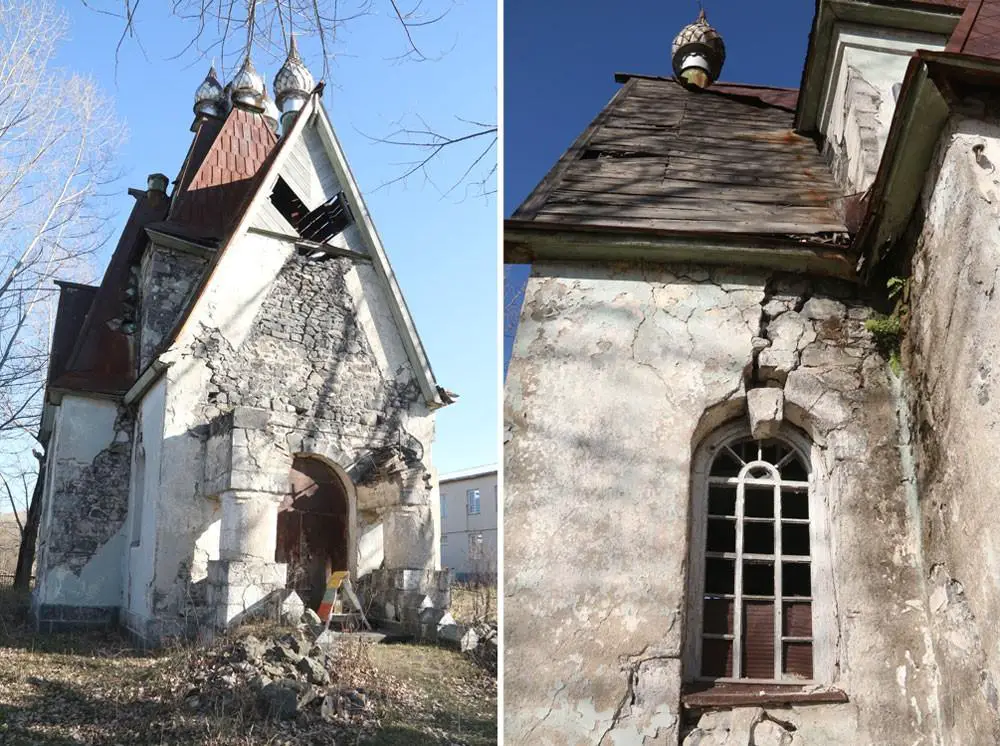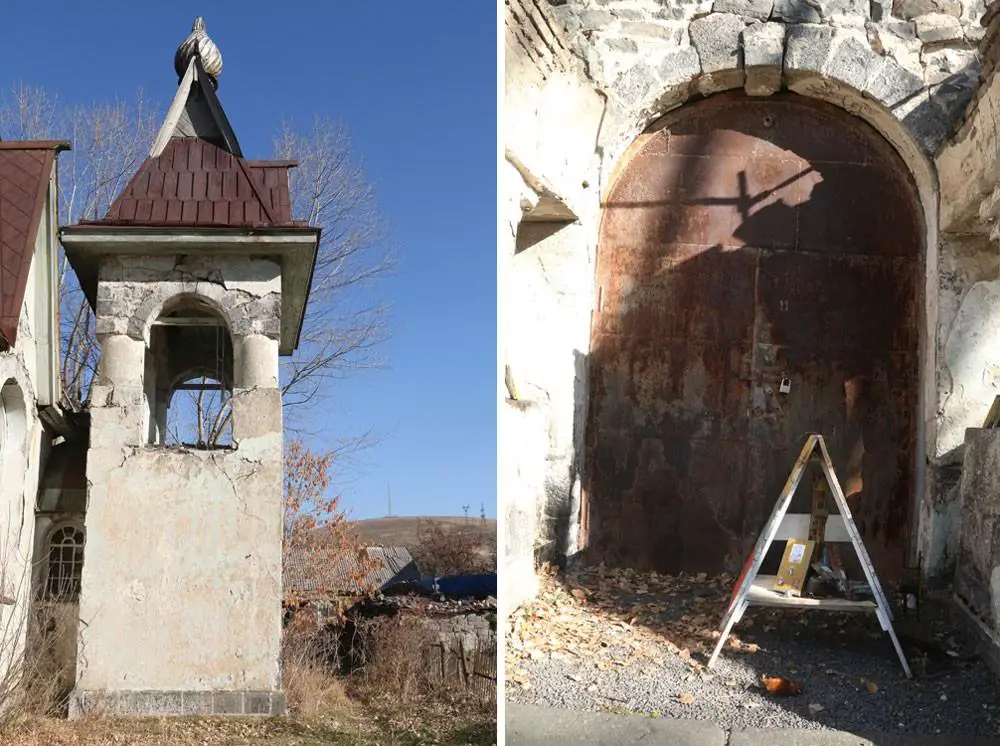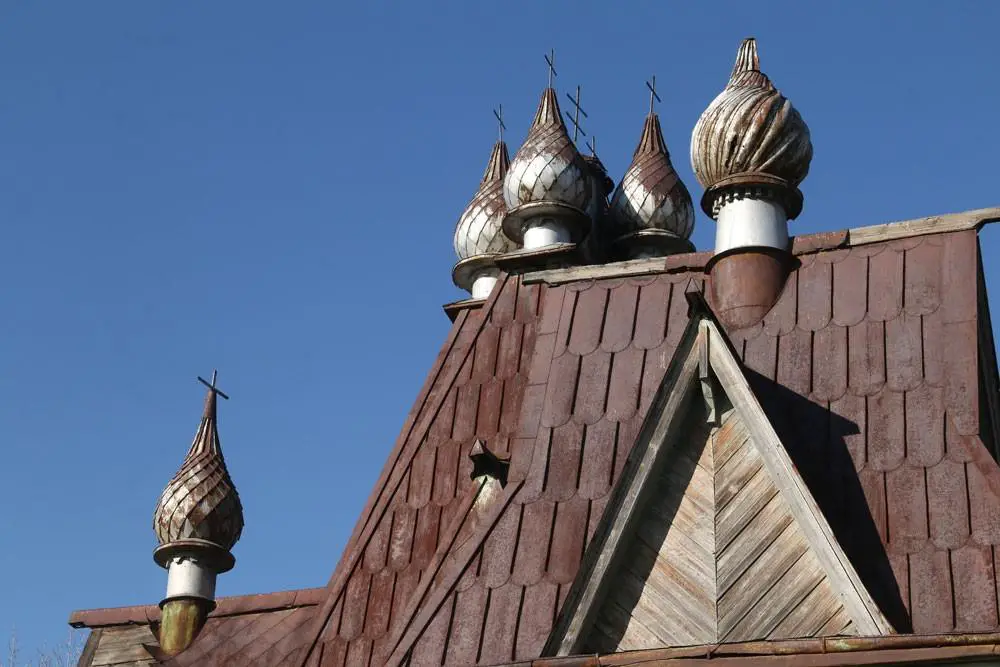The village of Amrakits, situated near Stepanavan in Armenia’s Lori Province, is renowned for the St. Nicholas the Miracle Worker Russian Orthodox Church, its wooden doors sealed since the 1988 Spitak Earthquake inflicted severe damage.
Although believed to have been established in the 1840s, Amrakits boasts older historical sites, including 13th-century churches, 13-18th-century cemeteries, and a burial mound dating back to 1,000-2,000 BC. Additionally, the medieval village of Amrak (now Amrakits) contributes to its rich historical tapestry.
Artur Nerkararyan, an administrative representative of Amrakits, recounts that the present village was founded in 1852 by 26 Slavic families who migrated from Borjomi, Georgia. Originating from Ukraine, specifically the regions of Poltava and Chernigov, these families initially resettled in Georgia. The settlement was originally named Nikolaevka (Novo Nikolaevka) and underwent a name change to Kirov in 1938. However, in 1991, the village was restored to its historical name, Amrakits.

According to online sources, the St. Nicholas the Miracle Worker Russian Orthodox Church was constructed by Ukrainian Cossacks who settled in Armenia in the early 19th century. This period coincided with the annexation of the Armenian Lori-Pambak, Ghazakh, and Shamshadin regions, along with Georgia, by Russia. The annexation of other parts of Eastern Armenia occurred in 1804-1813 and after the 1826-1828 Russo-Persian Wars, where Persia was defeated.
The Cossack troops stationed in Armenia played a role in establishing Orthodox chapels and churches across various settlements, using these religious edifices for their military oaths. The core of the Orthodox population in Armenia consisted of military and administrative personnel from Russia, along with their families. Over time, peasants relocating from different parts of the Russian Empire to Eastern Armenia also became integral to the Orthodox community.
The construction of the St. Nicholas the Miracle Worker Church took place in 1846 (or 1879, according to alternate sources) in the village of Nikolaevka. The church underwent a reconstruction from 1910 to 1914, resulting in its present form. Reflecting the neo-Russian variant of modern architecture and featuring a cross layout, the church includes a bell tower on the south side. Constructed with stone walls and a wooden roof supported by metal, the church sustained significant damage but was not completely destroyed during the 1988 Spitak Earthquake.

Designated as a historical-cultural monument, the church has remained closed since the earthquake. In 2009, its icons and various religious items were relocated to the Russian Orthodox church in Gyumri. Nevertheless, to this day, devoted individuals continue to visit the closed church. Lighting candles, placing religious images at the entrance, and even making sacrificial offerings near the church are expressions of their faith.
According to Arthur Nerkararyan, Amrakits was predominantly a Russian village until the 1960s. In the 1960s, Armenians began moving to Amrakits, with their numbers surging after the 1988 Spitak Earthquake. These newcomers hailed from various locations, including Stepanavan, Yerevan, and a significant portion (35-40%) had emigrated from Azerbaijan.
Official records indicate that Azeris also resided in Amrakits during the 1970s but subsequently left the area. Following the earthquake, Russians started departing from Amrakits, with many relocating to the Stavropol and Krasnodar regions in Russia. Among the 15-20 Russians remaining in the town of 600, the majority fall within the 40-50 age range.

Nerkararyan emphasizes that the church stands as the sole Russian Orthodox sanctuary in the vicinity. Despite being a hidden gem for tourists, who often visit the village solely to witness the church, many are unaware of its existence. The only clue is the distinctive roof and crosses visible from the Yerevan-Stepanavan roadway. Travelers catch sight of the church, prompting them to venture into the village for a closer look.
While the church serves as a tourist attraction, there are currently no plans for its renovation. Nerkararyan mentions that a few weeks ago, Alexei Sandikov, an ethnic Russian member of the Im Kayl (My Step) parliamentary faction, visited the village. Sandikov expressed his intention to propose the renovation of the church to his Russian partners, signaling a potential development in the future.
Photos by Hakob Poghosyan
RECOMMENDED: Villa Carpeneto – Italy’s Abandoned National Monument